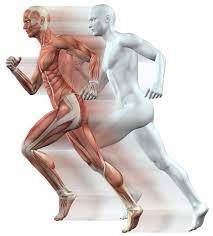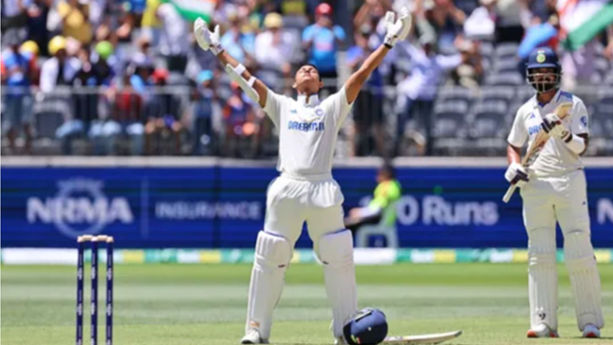
Engaging regularly in sports can have both positive and negative effects on bones, depending on various factors such as the type of sport, intensity, duration, and the individual’s overall health. Here are some effects of playing sports on bones:
Positive Effects:
Increased Bone Density: Weight-bearing activities, such as running, jumping, and resistance training, stimulate bone remodelling and increase bone density. This can help strengthen bones and reduce the risk of osteoporosis later in life.
Strengthening Muscles: Many sports involve movements that stress and strengthen muscles, which in turn exert force on bones during exercise. Strong muscles help support and protect bones from injury.
Improved Bone Formation: Regular physical activity can stimulate the production of bone-forming cells (osteoblasts) and improve the overall bone structure.
Enhanced Bone Strength: Impact sports, like soccer, basketball, and martial arts, can lead to bone adaptation by causing the bones to become stronger to withstand the impact forces.
Negative Effects:
Overuse Injuries: Repetitive motions in certain sports can lead to overuse injuries, such as stress fractures. These injuries occur when the bone is subjected to repetitive stress without adequate time to heal.
Injury Risk: Some sports involve a higher risk of traumatic injuries, like fractures or dislocations. While bones can heal, severe injuries may require surgical intervention and can potentially lead to long-term issues.
Delayed Bone Growth: Intense training and inadequate nutrition in young athletes can potentially lead to delayed bone growth and development.
Bone Loss with Inactivity: Athletes who stop participating in their sport due to injury or retirement may experience bone loss if they don’t engage in weight-bearing activities or strength training to maintain bone health.
Tips for Maintaining Bone Health While Playing Sports:
Balanced Nutrition: A diet rich in calcium, vitamin D, and other essential nutrients is crucial for bone health. Consult a healthcare professional or nutritionist to ensure you’re getting adequate nutrients.
Proper Training: Gradually increase the intensity of your training to reduce the risk of overuse injuries. Incorporate cross-training and rest days into your routine.
Rest and Recovery:Rest and recovery play a crucial role in maintaining bone health while participating in sports. Bones, like muscles and other tissues, need time to repair and adapt to the stresses placed on them during physical activity. Here’s how rest and recovery contribute to bone health in sports:
•Bone Remodelling:Rest and recovery periods facilitate bone remodelling, repairing and strengthening bones, improving density and overall health.
•Preventing Overuse Injuries:Overuse injuries like stress fractures result from repetitive stress, requiring rest days and reduced activity for healing.
•Hormonal Balance:Exercise disrupts hormonal balance, impacting bone health; proper rest and recovery maintain balance.
•Reducing Inflammation:Physical activity causes inflammation in bones; adequate rest promotes healing and reduces chronic issues.
•Minimizing Fatigue: Rest is essential for preventing overall fatigue and exhaustion, which can lead to decreased coordination and increased risk of accidents or falls that might impact bone health.
•Supporting Muscle Health: Rest days are crucial for allowing muscles to recover. Strong muscles provide support to bones, helping to reduce the risk of injuries.
•Avoiding Overtraining Syndrome:Overtraining syndrome negatively impacts bone health; balanced training programs prioritize rest and recovery.
Sleep Quality: Adequate sleep is a critical component of recovery. Sleep is when the body carries out repair and regeneration processes, including those related to bone health.
•Nutrient Absorption: Rest and recovery allow the body to absorb nutrients, such as calcium and vitamin D, which are essential for bone health. Nutrient absorption can be impaired if the body is constantly under physical stress.
•Long-Term Bone Health: Consistently allowing sufficient time for rest and recovery throughout your athletic career can contribute to better long-term bone health, reducing the risk of bone-related issues later in life.
Consult a Professional:Consulting a professional for maintaining bone health while playing sports is a wise step to ensure you’re taking the right measures to protect your bones and overall well-being. Here’s how you can go about it:
•Sports Medicine Physician:Sports medicine physician treats and prevents injuries in physical activity, assessing bone health, providing injury prevention guidance, and creating customized plans.
•Orthopaedic Surgeon:Orthopaedic surgeons address musculoskeletal conditions, including bone injuries, providing expert advice for bone health management.
•Physical Therapist: A physical therapist can design exercise programs to strengthen bones and prevent injuries. They can also provide rehabilitation if you’re recovering from a bone-related injury.
Protective Gear:Wearing appropriate sports gear can help prevent bone injuries and promote overall bone health by providing support, reducing impact, and enhancing safety during physical activities. Here are some types of sports gear that can contribute to bone health:
•Footwear: Properly fitted athletic shoes with adequate cushioning and arch support can help absorb shock and reduce the impact on bones and joints during activities like running, jumping, and court sports.
•Protective Padding: In sports where falls or collisions are common, such as football, hockey, and rugby, wearing protective padding can help cushion impacts and reduce the risk of fractures or other injuries.
•Helmets: For activities like cycling, skateboarding, and skiing, wearing a helmet is essential to protect the head and prevent skull and brain injuries, which indirectly contribute to overall bone health.
•Joint Braces and Supports: In some cases, wearing joint braces or supports can help stabilize and protect vulnerable joints, such as the knees and ankles, during sports that involve rapid changes in direction or jumping.
•Compression Garments: Compression clothing, like compression socks or sleeves, can enhance blood circulation and reduce muscle vibration during exercise, which may help minimize muscle fatigue and stress on bones.
•Mouth guards: In contact sports like martial arts or rugby, wearing a mouth guard can help protect the teeth and jaw, reducing the risk of dental and jaw injuries.
•Eye Protection: In sports like racquetball, squash, and certain martial arts, wearing protective eyewear can prevent eye injuries and indirectly contribute to overall safety and bone health.
•Proper Sports Bras: For female athletes, wearing a well-fitting sports bra provides support for the chest and helps reduce breast movement during physical activity, which can minimize discomfort and potential strain on the upper body.
•Safety Gear: Depending on the sport, additional safety gear such as knee pads, elbow pads, shin guards, and gloves may be necessary to prevent injuries and promote bone health.
•Gymnastics and Dance Mats: In activities that involve jumping or landing, using appropriate mats or landing surfaces can help absorb impact and reduce stress on bones and joints.
Remember, the effects of playing sports on bones can vary widely depending on individual factors. Maintaining a healthy balance between activity, nutrition, and proper training is key to optimizing bone health while participating in sports.
The author is a gHead of the Department & Senior Consultant Department-Bone, Joint Replacement And Orthopedics Sanar International Hospital















